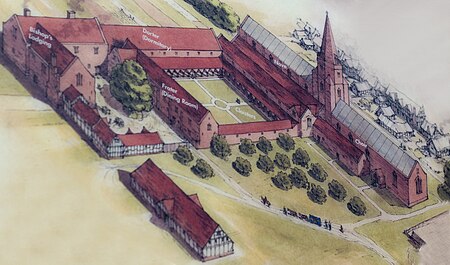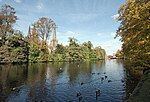Franciscan Friary, Lichfield

The Franciscan Friary was once a large estate located on the west side of Lichfield city centre in Staffordshire. The estate was built and inhabited by the Franciscan Friars from 1237. At one time the estate consisted of a large church, a cloister, dormitory lodge and a refectory building as well as many other domestic dwellings. Henry VIII ordered the dissolution of the Friary in 1538 and the majority of the buildings on the estate were demolished. Today the site of the Friary is a Scheduled Ancient Monument and the excavated ruins of some of the original buildings are visible in the specially designated site. The only original buildings still standing are present at the south west end of Lichfield Library.
Excerpt from the Wikipedia article Franciscan Friary, Lichfield (License: CC BY-SA 3.0, Authors, Images).Franciscan Friary, Lichfield
The Friary, Lichfield Darwin Park
Geographical coordinates (GPS) Address External links Nearby Places Show on map
Geographical coordinates (GPS)
| Latitude | Longitude |
|---|---|
| N 52.68191 ° | E -1.83008 ° |
Address
Franciscan Friary
The Friary
WS13 6QG Lichfield, Darwin Park
England, United Kingdom
Open on Google Maps









